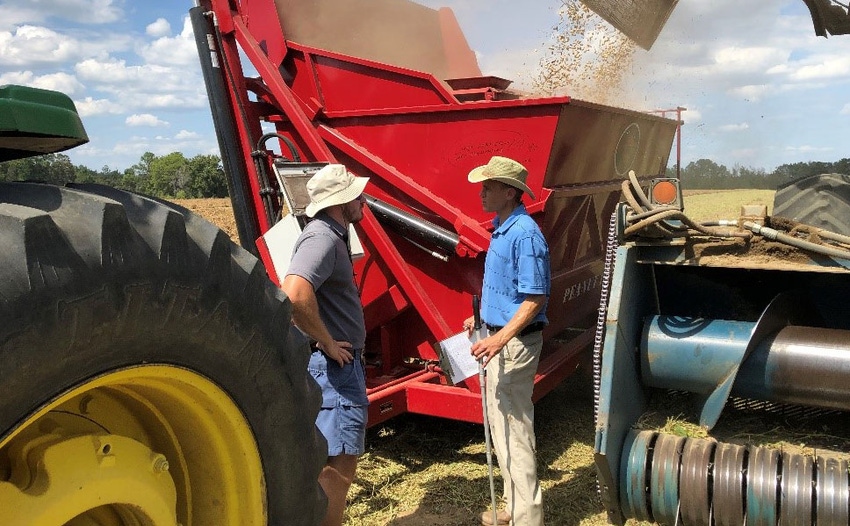November 7, 2019

Now is one of the best times of the year. After spending countless hours in the field caretaking hundreds of research plots, I get to observe the results of this labor, try to make sense of it all, and perhaps provide even better answers to the myriad of questions that get thrown our way.
In 2019, I conducted more than 45 field trials trying to minimize the number of times I might have to say, “I do not know.” You would think that after 32-plus years in the field, this would not happen all that much. Predictably, it always does (especially as my hair gets whiter) and it is a humble reminder that learning lasts a lifetime.
Over the next few months, I will go into greater depths on the results of some of these trials in this column and at one of the many winter meetings I will attend across Georgia (and elsewhere) over the next few months.
In the short term, here is a quick synopsis of a few of the more interesting peanut results:
Georgia-18RU
There is a lot of buzz around this new peanut variety from UGA. Will it be the one to replace GA-06G? This was the first year that I had access to it for use in my weed control research. GA-18RU does not appear to be more sensitive to Valor (or other herbicides) than GA-06G and it produced higher yields than GA-06G in 1 of 3 trials. I am sure you will get to see many more variety trial results from Dr. Scott Monfort and all of his cronies.
Auxin (TTI) Nozzles in Peanuts
Once again I had the opportunity to conduct several large-plot, on-farm, replicated trials comparing the performance of TTI nozzle tips to flat fan tips. At all three locations, there were no differences between nozzle types for weeds, insects, disease, and yield. Growers who choose to use their “auxin” nozzle for peanut pest management should be using at least 12 GPA, have good crop rotations, and be on a tight spray schedule. In some of my earlier nozzle research, I have observed a reduction in grass control when using nozzles that produce larger/coarser droplets so keep that in mind.
Cobra or Ultra Blazer Tank-Mixed with Cadre + Dual Magnum or Zidua + 2,4-DB
It is well known that I am not a huge fan of multiple tank-mixes because so much is unknown and unpredictable. But, results from a two-year study suggest that growers who have ALS-resistant pigweed and also need/want to use Cadre can tank-mix Cobra or Ultra Blazer without worrying about negatively effecting peanut yield.
Peanut Weed Control Programs
Our recommended weed control programs continue to work very well in heavy pressure fields. Starting clean, using multiple residuals, and making timely POST herbicide applications is a well-proven recipe for success.
As you begin your preparations for the upcoming 2020 production season, I encourage you to gather as much science-based information as possible, be skeptical of non-replicated data, and attend a local county production meeting. If you have a weed control question that has not yet been answered, please let me know.
As always, good weed hunting.
About the Author(s)
You May Also Like






